Hydrangea in the Urals: suitable varieties and secrets of growing

Hydrangea is one of the most beautiful flowers familiar to gardeners since ancient times. The homeland of this exotic plant is East Asia, but hydrangea can be grown in various parts of the world, including the Urals.




Which one is better to plant?
Not all varieties can be grown in cold regions of the country. A garden hydrangea that will decorate a personal plot in the Urals, first of all, must be winter-hardy. Local gardeners may want to consider paniculate or tree-like varieties.
However, these flowers will most likely need a reliable shelter for the winter. After all, winters in the Urals are quite cold and in severe frosts, the plant will simply die. Now, in order to more clearly understand in favor of which flower it is better to make your choice, it is worth considering the most famous and beloved varieties by many.


Panicle hydrangea
There are many varieties of such hydrangeas, but in the cold regions of the Urals the following will take root best.
- Darts Little-Dot. It is a small beautiful bush, the height of which varies between 75-85 centimeters. The flowers are white in color and are collected in large inflorescences. After a few weeks of flowering, their color becomes pale pink. Hydrangea blooms from the second week of July until the end of summer.
This variety can withstand severe frosts, down to -28 degrees.


- Limelight Pieter Zwijnenburg. This is a taller plant. Such hydrangeas reach a height of 2-2.5 meters. Very often this variety is used to decorate parks or gardens.
The white, almost creamy flowers of the panicle hydrangea look beautiful anywhere. Flowering also begins in mid-summer, but lasts until the very end of September. The plant is quite resistant to cold weather.
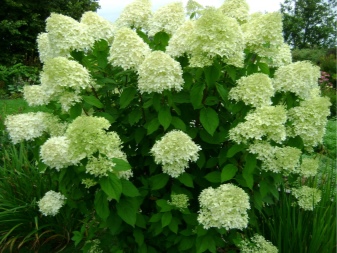

- Unique - This is another hydrangea variety that can survive frosts down to -35 degrees even without shelter. The bush itself is large enough, decorated with huge white inflorescences. At the very end of flowering, they become almost pink.


- Vanille Fraise. The height of this bush does not exceed 1.5 m. The flowers are white, almost creamy. Over time, their petals turn red. This hydrangea variety can survive frosts down to -28 degrees, so it needs shelter.


- Kyushu is a huge bush, the height of which reaches 3 meters. White flowers are collected in beautiful, slightly oblong inflorescences. This hydrangea can withstand severe frosts, which allows gardeners not to think about sheltering the bush for the winter.


Tree hydrangea
Treelike hydrangea also enjoys the same success in the cold Ural regions, having a large number of varieties resistant to severe frosts.
- Annabelle - one of the most popular varieties, whose homeland is America. This is a beautiful bush with a spreading crown, the height of which does not exceed 1.5 meters. Light green flowers can delight others from mid-July to late September. The plant can withstand frosts down to -38 degrees, so it does not need shelter for the winter period.


- Sterilis unlike other varieties of garden hydrangea, it blooms for a long time. The process begins in July and lasts until the middle, and in some cases until the end of October. At first, the flowers are light green in color, and by the end of flowering they become completely white. This hydrangea is frost-resistant and can withstand temperatures down to -33 degrees.

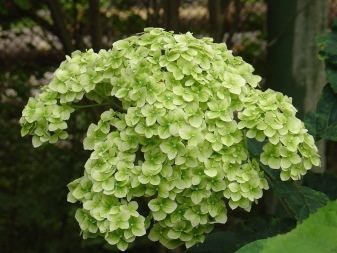
Landing rules
Before you start planting this plant, you need to decide on a place. It should be quiet and well protected from winds or drafts. Indeed, in open areas, hydrangea does not develop well. It is also worth taking care that the soil next to the hydrangea does not dry out. The owners also need to ensure that the water near the bush does not stagnate, because this will lead to the roots quickly decaying, and the beautiful plant will wither and may even die.
In order for the garden hydrangea to develop correctly, professionals recommend planting it in slightly acidic soil.
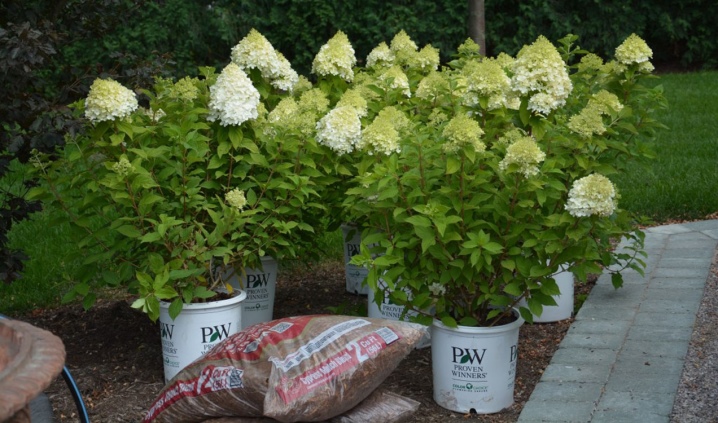
In the Urals, such lands are extremely rare. Therefore, when planting, it is imperative to add peat to acidify the earth. It is best to plant hydrangeas in early spring, after all frosts have passed.
First you need to start preparing the hole. It should be 50 centimeters deep and wide. Next, you need to pour 30 liters of settled water into it and leave it for one day so that the earth can be well saturated with moisture.
Then you need to fill in 1 part of humus, 2 parts of peat, 1 part of sand and 2 parts of ordinary earth. There you also need to add 20 grams of urea, 25 grams of sulfuric potassium and 55 grams of superphosphate. Before planting the future bush, it is necessary to cut off all excess shoots, and also cut the roots a little. Next, you need to immerse the seedling in the hole and cover it with earth. In this case, the root collar should be flush with the ground. Immediately after planting, the hydrangea must be watered, and the place around the bush must be covered with needles of a coniferous tree.



Care features
Growing such a beautiful plant in the open field is an activity for those who do not mind spending time caring for the garden. Hydrangeas need timely watering and feeding. In addition, it must be able to properly prepare it for the Ural winter.
Watering
It is necessary to moisten the soil around the bush regularly, especially at a time when there is no rain for a long time. Experts recommend using water with the addition of a manganese solution for irrigation. It will be enough to add 2 grams per 1 liter of water. This will help make the inflorescences more lush and beautiful.


Fertilizer
To grow a healthy hydrangea in the Urals, you must regularly use top dressing. You can choose both organic and mineral fertilizers. This should be done at least 4 times a year. First of all, it is necessary to "feed" the plant, which has overwintered and is preparing for a new flowering period.
Next, you need to apply fertilizers 2 times a month. Initially, urea, potassium and superphosphate are used. After the buds appear, it is enough to add only potassium and superphosphate. All dosages are indicated on the packaging of purchased fertilizers.
At the end of summer, 1 bucket of humus or compost must be added under each bush. It is worth noting that hydrangeas are among those plants that can be fertilized with the most unusual products. For example, use ordinary yogurt or kefir for these purposes. Only in this case they must be diluted with water. It should be used twice as much as a fermented milk product.
Already dried bread is also suitable as fertilizer. It must be soaked with water, and then crumbled under a bush.


Shelter for the winter
Preparing for winter is an equally important procedure, especially if the plant is planted in a region like the Urals. The most "strong" frost-resistant hydrangeas winter even without shelter. However, in the Urals, the temperature can sometimes drop below that to which they are adapted. In extreme cold, the roots die off. To prevent this from happening, the bushes should be covered for this time.
Preparations for winter must begin before the onset of frost. The first thing to do is remove leaves on all existing shoots. After this, the bush must be well pulled with a rope, and then wrapped with the selected covering material.
Next, the plant must be bent to the ground, and then fixed either with bricks or stones. From above, the hydrangea bush must be sprinkled with sawdust or overlaid with spruce branches. After that, everything must also be covered with roofing material or film.


Some gardeners use a frame as a shelter. In this case, the hydrangea does not need to be tilted to the ground. It is enough just to put a metal frame over it and fill it with either dry leaves, sawdust, or spruce needles. For more confidence, the frame is also covered with a film on top.
As soon as it gets warmer, the bush can be opened slightly. However, it is worth fully disclosing the hydrangea only when there is one hundred percent certainty that the frost season has already ended.


Pruning
Another important point is pruning the hydrangea. This is done so that the bush is healthier and lush. After correct pruning, the plant pleases the eye with a large abundance of inflorescences.
Throughout the season, you need to monitor the shape of the bush. If this is not done, then the plant will look unkempt. In addition, the flowers will become smaller over time. This procedure is best done in early spring.

After wintering, the bushes must be well inspected. Among them, you must choose the strongest shoots. There should be about 8-10 of them. All broken and dry shoots must be removed immediately. The same can be done with frozen branches. They should be cut to a healthy fiber.
Some experienced gardeners only leave a couple of buds at the bottom of the bush. In this case, the hydrangea bush will be decorated with only a few buds.
However, they will all be quite large and beautiful.
In addition, the bush as a whole will look more attractive. In addition, it must be remembered that too large inflorescences can break the branches with their weight. To prevent this from happening, you will need to regularly carry out decorative pruning.
You need to take care of the hydrangea in the autumn. At this time, it is necessary to make sanitary pruning of all shoots. Each of them must be cut in half. This will help the plant survive the winter much easier. In addition, in this case, the plant will be easier to cover.


Breeding options
There are several ways to propagate this plant. Depending on your capabilities, you can do this with seeds, dividing the bush, using layering, offspring or cuttings.
Seeds
This option is the most difficult and time consuming. Sowing hydrangea seeds should be in early March. The ground must be slightly damp. In this case, it is not necessary to sprinkle them additionally. After sowing the seeds, cover the container with foil. Germinated plants should be kept in a room where the temperature does not drop below 21-23 degrees.
After 3-4 weeks, the first shoots will begin to appear. Then they need to be grown for 2 years. When their height reaches 35 centimeters, the seedlings can be moved into the garden. This breeding option is only suitable for those varieties of hydrangea that exist in the wild, and have not been bred by breeders.



Cuttings
This is the most popular breeding method used by gardeners. It is worth harvesting the material in the middle of summer, when it is time for budding. It is best to choose cuttings of young side shoots. Each cutting should have 1-2 buds.
You need to cut them off in the morning, so they can retain moisture in themselves, which means they will take root faster. After that, the cuttings must be placed in water, into which a growth stimulator was added in advance.
When the first roots appear, it will be possible to plant the cuttings in the substrate prepared in advance. The mixture should consist of one part sand and two parts peat. They need to be watered daily. Young leaves should appear in a month. After that, the seedlings must be grown for another 2 years and only then planted in open ground.
This process takes a long time, but the plant ends up being healthy and beautiful.
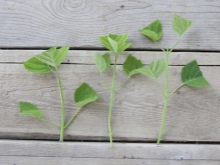


Layers
Choosing this breeding option, the procedure should be postponed until the spring. First you need to dig up the ground near the bush, then make several grooves, the depth of which should be no more than 2-3 centimeters. Shoots must be laid there. They need to be fixed with small stags made from branches. Then it is worth sprinkling everything with earth.
At the beginning of autumn, each layer should form young shoots. When their height reaches at least 20 centimeters, young bushes must be spud. Then you need to repeat this procedure every week. At the beginning of October, all layers must be dug up and then divided. The height of each new seedling should be at least half a meter.
After separating them, you need to dig them in. And only a year later, future bushes can be planted in a place prepared in advance.
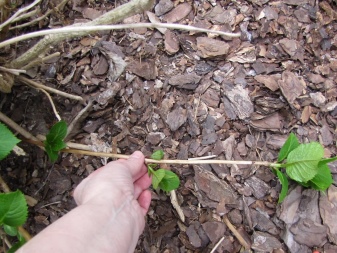

Offspring
This method is not suitable for everyone. In order for the plant to take root, in the autumn it is necessary to remove a small layer of earth along with young shoots. Then very carefully it is necessary to separate it from the main bush and transplant it into a prepared place for growing.
By dividing the bush
So the hydrangea is divided only when gardeners decide to transplant it to another place. Most often, the transplant is done in early March. The bush must first be watered, wait a little and only then dig it out.
Next, the roots of the hydrangea must be rinsed under running water to remove the remaining dirt. Then you can start dividing the bush itself. Then you need to cut the shoots, as well as the roots and plant the plants in the holes made in advance.


Diseases and pests
There are several dangerous creatures which can greatly harm hydrangeas.
- Aphid. This insect feeds on juice, after which it leaves a sweet discharge. Reproduction is very fast. For the fight, you can use folk remedies.
For example, you can take 150 grams of crushed garlic and pour 3 liters of water over it. After two days, you need to add ½ part of grated laundry soap. Spraying with this tincture must be carried out until the aphid is completely gone.
- The spider mite lives on the leaves, more precisely, on their inner side. In this case, they begin to turn yellow, patterns resembling a spider web appear on them. For the fight, you can use both folk remedies and chemicals.
- Slugs most often appear on too dense bushes. They eat the leaves, which makes the hydrangea completely unattractive. You can use molluscicide to fight.


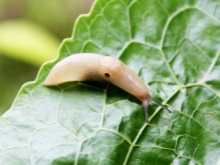
Hydrangea will need to be protected not only from pests. Various diseases can also harm the bush.
Here are the most common problems and their causes.
- Yellowing as well as leaf fall is common. Leaf problems are caused by direct sunlight. The reason may also be waterlogging of the soil, lack of fertilizers, low acidity of the soil.
- Blackening of the leaves occurs as a result of using hard water when watering. In addition, this phenomenon is possible in the event of a sharp temperature drop or the appearance of strong drafts.
- Peronosporosis is a disease characterized by the appearance of small oily spots on the plant. To prevent the disease, you need to treat the entire bush with a solution of copper sulfate and soap. It is best to spray in the evening.
- Chlorosis appears on a plant when there is not enough iron. In this case, the leaves become much lighter, and the veins remain the same dark. In addition, some shoots dry up and the buds curl. To combat this disease, you can use popular drugs purchased in specialized stores, for example, "Ferovit" or "Antichlorosis".
Alternatively, you can use a potassium solution.Enough will be 35 grams of this substance in a bucket of water.




Summing up, we can say that with proper care, hydrangea can grow very lush and beautiful even in the Urals.
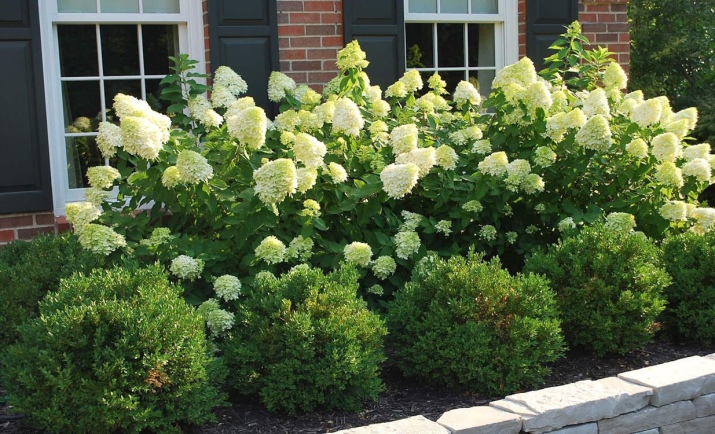





The following video will tell you about how hydrangea is grown in the Urals.



































































Just fine. You are smart.
The comment was sent successfully.